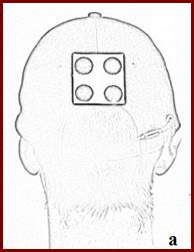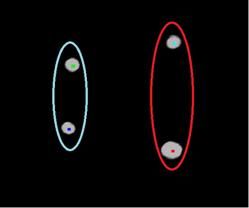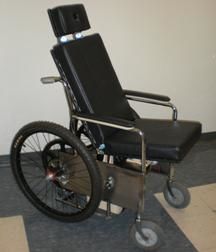Quadroplegia is paralysis caused by illness or injury such as Spinal Cord Injuries (SCI) which usually happens because of a sudden severe blow to the spine that results in the partial or total loss of use of all of the person’s limbs and torso. There are an estimated 12,000 to 15,000 new cases of SCI per year in the U.S. About 10,000 of these people are permanently paralyzed, and many of the rest die as a result of their injuries. Quadriplegics rely on power wheelchairs for mobility, but the current hands-free controller systems are obtrusive and expensive, such as the “sip and puff” design that requires the operator to blow into a tube to control the chair.
Dan Kupetz ’10 and Scott Wentzell ’10 decided to help quadriplegics by designing a power wheelchair with a novel head-tracking motion control system for quadriplegics with head and neck mobility. The official name of their project is the Bio-Signal Controlled Power Wheelchair, although it is also known (more accurately) as the Head Position Controlled Power Wheelchair. Head movement was measured using camera-based motion-tracking of an infrared reflecting array on the back of the user’s head. Reflective orbs on the back of the users head reflected infrared light (top two images); a webcam modified to detect infrared light worked in conjunction with a java library of functions to track the orbs of light (bottom two images).




The control system translated the position of the user’s head relative to the wheelchair headrest into speed and directional control of the wheelchair and also included a standby mode that was activated by pressing the head back against the headrest, which activated the braking system while deactivating the drive train, allowing for manual control of the wheelchair via a rear support system. The final design successfully tracked the motion of an infrared reflective array and translated the motion into wheelchair movement. The wheelchair successfully integrated front and rear suspension, a rear support/manual transport mechanism, and a battery powered drive train. The wheelchair itself was custom fabricated in-house, using the frame of a standard wheelchair as the only pre-fabricated part. The top speed was designed to be approximately 5.5mph.


The team presented their work at the Northeast Bioengineering Conference (NEBEC), which took place at Columbia University in March 2010.
Learn more
